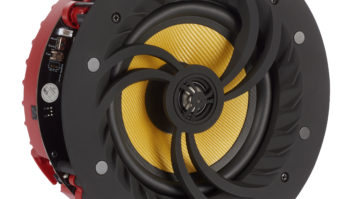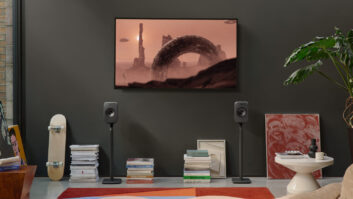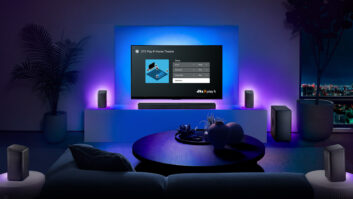Sales growth is slowing in wireless multiroom audio even as more companies enter a market whose top brand – Sonos — enjoys almost a 90 percent dollar share of the market at the retail level.
So you’d think the market would be in the midst of a shakeout, shrinking margins, and a downward spiral in average selling prices. But you’d be wrong, at least for now.
Some audio suppliers see ASPs and retail-level margins holding steady or rising as high-performance audio brands begin to play in a market established by Sonos 10 years ago. And they aren’t too worried yet about slowing growth because the household penetration rate is still very low. Only 2 percent, or 3 million, of the country’s 116 million households have wireless multiroom-audio speakers, according to estimates from Yamaha, which entered the market in August.
For its part, U.K.-based Futuresource forecasts U.S. household penetration of 5 percent in 2015, rising to 21 percent in 2019.
Still, warning buzzers are sounding. To maintain growth, the industry must overcome a consumer-awareness deficit and consumer confusion about the differences between multiroom Wi-Fi speakers and their peer-to-peer Bluetooth counterparts, whose sales continue to soar. Sonos took a step in stoking awareness in 2012 when it launched its first TV commercials, then placed its first Super Bowl ad in 2014. Sonos expanded its TV-ad budget every year since 2012, the company told TWICE.
Nonetheless, greater awareness is still needed, suppliers and analysts said.
By the numbers: The market is doing well by consumer electronics standards. Retail-level sales for the 12 months ending July 2015 were up 22 percent in units and 25 percent in dollars, The NPD Group Retail Tracking Service found. The growth rate, however, is way down from 178 percent in units and 126 percent in dollars for the 12 months ending July 2014.
For calendar 2014, unit and dollar growth also slipped on a year-over-year basis. In this market, Sonos dominates with an 89 percent share of retail-level dollars in the 12 months ending July 2015. Bose follows with 8.5 percent, with Denon and Polk next at 0.8 percent and 0.5 percent, respectively, NPD statistics show.
For its part, Denon forecasts retail-level dollar growth this year of 10 to 15 percent in dollars to around $400 million to $500 million (excluding multiroom-equipped soundbars), down from 2014’s approximate 20 percent gain, said Brendon Stead, senior VP of product development at Denon parent D+M. That would include significant direct-sales efforts by Sonos, he said.
Retail-level unit sales will grow to about 1.1 to 1.3 million in 2015, Stead added.
Yamaha takes a more expansive view, estimating consumer-level sales of $1 billion when factoring in multiroom-equipped soundbars and custom-install-dedicated products, excluding wireless-multiroom-equipped audio/video receivers, which are available only from Yamaha and Sony.
“We see the market growing this year in the 15 to 20 percent range, which is slower than the 40 percent to 50 percent or so growth that we’ve estimated for the past few years, but it’s still really good growth,” said Yamaha A/V division GM Bob Goedken.
“We are still in the early stages of this market,” he said of its potential. “With only about 2 to 2.5 percent of U.S. homes with a wireless multiroom-audio system, there is plenty of growth left in the marketplace.”
Audio-brand potential: Additional potential is open to traditional home-audio suppliers who are trying to differentiate themselves from Sonos, which NPD said accounted for 89 percent of consumer-level sales for the 12 months ending July 2015.
“If we talk to a different type of customer, this will be an opportunity,” said Fiore Cappelletto, director of brands for Fine Sounds Group. The company’s brands consist of McIntosh, Wadia, Sonus Faber, Sumiko, And Audio Research. Two of those brands later this year will launch their first wireless-multiroom products, each incorporating DTS’s Play-Fi technology to interoperate with other-brand Play-Fi equipment.
Yamaha also seeks to differentiate, Goedken said. “MusicCast is designed for new and different customers. It is integrated into products that can deliver a wider variety of listening experiences, such as true surround sound (including multi-dimensional Dolby Atmos and DTS:X) and true hi-fi. It is not just for background music.” Yamaha also offers “more content to stream around the home (HDMI, vinl, AM/FM, CDs, and streaming services) along with Bluetooth and high-resolution audio to give the consumer more flexibility and quality audio throughout their home than ever before. “
Bluesound is also trying to set itself apart from more widely available brands. The brand was the first to launch wireless high-resolution streaming products in 2013 and just launched its second-generation products.













